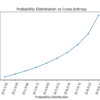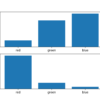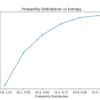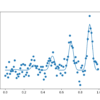Logistic regression is a model for binary classification predictive modeling. The parameters of a logistic regression model can be estimated by the probabilistic framework called maximum likelihood estimation. Under this framework, a probability distribution for the target variable (class label) must be assumed and then a likelihood function defined that calculates the probability of observing […]










